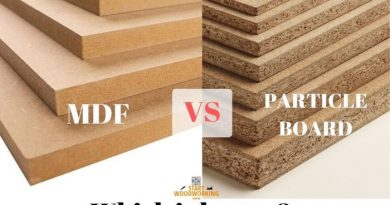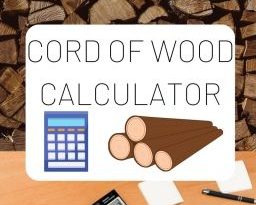How Long Does Paint Last?
The paint buckets of the last renovations have been stacked in the basement for years. But how long do the paint residues last, how can you recognize bad wall paints and how are they best disposed of? Here are the most important tips.
Regular wall paints last about two years depending on the stored conditions and the self life specified by the manufacture, while silicone alkyd paints can last up to four years. Generally each paint can last a long time if some of this condition are respected: the container type, the environmental storage space, the temperature, if the container is unopened,etc.
If you want to know how to proper store paints and every tip and trick available when it comes to paint storage read this article!
After painting the four walls, it always makes sense to keep small amounts of paint for later repairs. However, the durability of paints that have already been used is not infinite.
For health reasons, many emulsion paints today mostly contain no solvents and only very few to no preservatives.
Allergy sufferers and people who are sensitive to certain substances benefit from these interior colors. At the same time, the water-based emulsion paints are susceptible to germs and mold.
If you want to keep interior paints for a while, you should ensure proper storage so that the paint last as long as possible. If the wall paints are no longer usable after several years, they must be disposed of properly.
When it comes to storing paint residues or putting a bucket of wall paint back for later repairs, the question of durability quickly comes into play.
Just like for food, an important rule applies here: opened containers shorten the lifespan of a paint, while tightly closed buckets or cans effectively preserve the contents. But how long does a wall paint last?
Does normal wall paint last on wood?
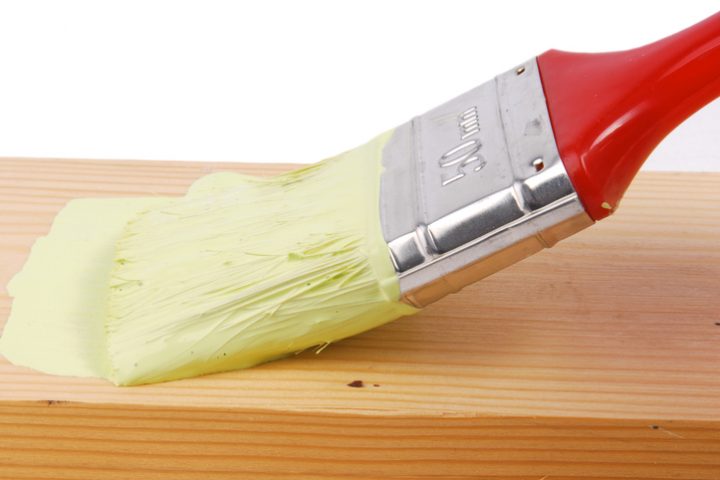
Most people use modern emulsion paints to paint their walls because they are offered everywhere and are easy to work with.
This type of paint has another interesting advantage: it sticks to many different surfaces, not just the plastered wall or wallpaper. What about wood?
Wood as a base for wall paint: is that possible?
In principle, emulsion paint can also be painted on wood, just as this type of paint lasts on concrete, sand-lime brick or a metal garage door if it is prepared accordingly. It is only important that the surface does not suck too much.
It is better to pre-treat raw wood with a special wood primer. As a general pre-treatment, it is advisable to water the surface lightly and to grind off the upstanding fibers thoroughly after drying.
You may also want to fill the wood with a spatula before painting it to get a smooth surface. For this purpose, special leveling compounds for wood are offered, which generally give a wall paint a good hold.
These disadvantages arise when you paint wall paint on wood
If you prefer not to pre-treat the wood at all, but to start painting immediately, the following problems may arise:
- The wood fibers straighten up when the wet paint penetrates and then form a rough surface.
- The solvent is sucked into the wood too quickly, the wall paint peels off after drying.
- The color is not as nice as a varnish and shows clear brush and roller marks after painting.
- Although you would probably like to preserve the wood grain, it will add to the wall paint with the fillers.
As you can see, painting wall paint on wood is not without its problems, but it is certainly possible.
Many a creative mind probably relies on the typical optical effects of the emulsion paint on a wooden surface:
Because wall paint on wood just doesn’t look as clean and tidy as varnish, just right for a beautiful design project in shabby-chic style !
After drying, the surface can still be sanded in places, imitating traces of use: perfect!
How do I keep leftovers of paint?
Leftover wall paint can be stored in the paint bucket. However, you should wipe off the dirty paint from the edge of the bucket with a dry cloth so that the lid can be closed properly.
Cleaned jam or cucumber jars, which can be sealed airtight, are also suitable for storing small remnants. Both paint buckets and mason jars should be kept standing on the lid.
It is helpful to label the stored paint, for example noting the paint or the color number and which room was painted with it.
It is particularly important for the durability of the colors that they are stored in a cool but frost-free place.
Non-insulated basements, garages or sheds are not suitable for storage. As soon as emulsion paints are exposed to frost, the ingredients are damaged and the paint is no longer usable.
How long do wall colors last?
There is no general best-before date for emulsion paints, but they do last for a while.
How long the paints can be used depends on various factors:
- Proper storage (cool, frost-free, airtight) primarily plays a decisive role.
- The shelf life is also influenced by whether the container is unopened or has already been opened and used.
- Unopened paints usually last at least 24 months, usually much longer.
On the other hand, opened colors can become bad after half a year to about a year after the first use.
How do I recognize overlaid colors?
If a paint has gone bad after it has been stored for too long, you can see it immediately: when you open the bucket, you get an unmistakably foul, foul smell in your nose.
In this case, the material must be disposed of directly. With smaller quantities, however, it can happen that the paint has dried up and can no longer be used.
How do I properly dispose of wall paints?
When throwing away paints, there are certain guidelines that must be observed.
Only completely dried material residues may get into the household waste.
For environmental reasons, liquid, uncured paints must be returned to a recycling center or to a mobile pollutant collection, where they are properly disposed of.
When does paint spoil?
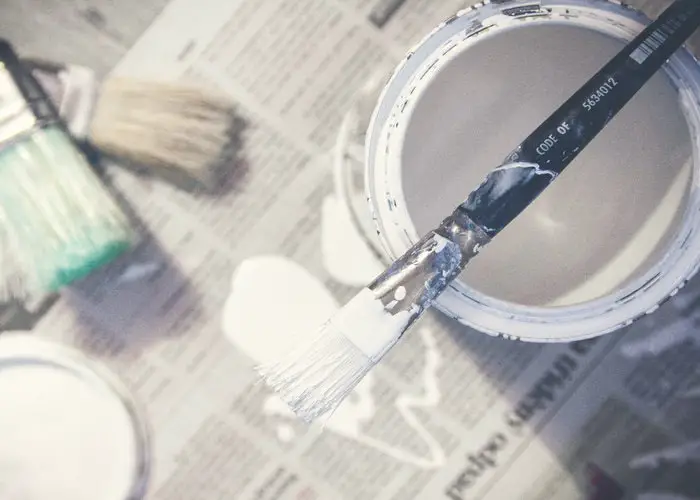
How long do emulsion paints, varnishes and glazes last? How do you best store them? How do you recognize spoiled paint, varnish or glazes? We want to answer these questions here.
The best before date on the paint bucket
The label of a paint, varnish or glaze container does not always reveal the expiry date – and if so, this date refers to the unopened container.
In practice, unopened paints, varnishes or glazes will last five to ten years before they should end up in the trash. This is almost always longer than the container itself states.
How to Detect Spoiled Paint
If individual color components such as pigments have sunk, you can usually simply stir them up again, and you should be careful if you get a bad smell when you open the paint cover.
An unmistakable sign that the color has spoiled and that the container is best for you dispose of as hazardous waste as soon as possible. The same applies if the paint is so thick that you can no longer stir it.
By the way, we advise against trying to bring the paint back into a ready-to-use state with a lot of “water”. As a result, the paint quickly becomes too fluid, pigments do not dissolve in the dispersion or sink quickly.
Smaller, dried-up cracks on the walls of the paint bucket are no longer a problem.
Store paint correctly
When you no longer need the paint, you should always press the lid firmly onto the container so that it is airtight. Paints, varnishes and glazes like it cool and evenly tempered.
Caution: The products must not freeze. Otherwise you can throw them away immediately.
Durability of lacquers and glazes
Acrylic varnishes and water-based glazes last longer than comparable solvent-based products. The reason for this is that solvents evaporate much faster.
If a thin skin has nevertheless formed on the varnish or glaze, remove it carefully and sieve the varnish into another container.
Shelf life of emulsion paints
Dispersion paints generally have no preservatives, so the durability of the paint decreases continuously after the paint bucket is opened.
Brushes or paint rollers bring bacteria and germs into the paint, which slowly but surely decompose the ingredients.
Then the paint loses its properties such as smudge resistance, wall adhesion or spreadability.
This condition is usually recognizable by a relatively solid layer of white paint on the bottom of the container and a cloudy, yellowish water layer above it.
Working properly, closing immediately and upright, cool and evenly tempered storage counteracts decomposition.
Wall paints in unopened containers last that long
As a rule, each shelf has a best-before date that provides reliable information about the minimum shelf life. However, this only applies as long as the lid has not been opened!
Most unopened, regular wall paints last about two years, according to the manufacturer, but even after that they are usually still usable.
As the name suggests, this is a minimum shelf life that is not so rarely exceeded by three to eight years.
How do I know that the paint has expired?
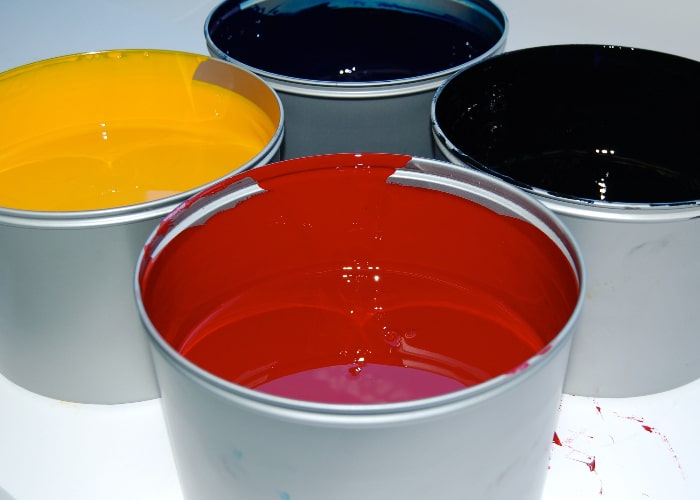
To determine how long paint lasts we need to know that when the tubes are open, the shelf life is reduced accordingly, it may have expired after one year, or it may decrease from the original eight to five years.
But how does the layperson know that a paint has expired?
In any case, yellowish accumulations on the surface do not yet indicate that the shelf life has been exceeded.
Rather, these are mostly binders that have settled upwards and are easy to stir in again.
Sometimes clear liquids or pigments also settle on top, in any case you should try whether you can mix the separated phases again.
You can recognize really spoiled colors by the following features:
- The wall paint exudes bad smells.
- You will discover noticeable mold growth.
- The individual components can no longer be mixed.
- Dried paint residues or dirt are in the paint.
- The wall paint has thickened over time and can no longer be stirred.
How to extend the durability of your wall paint
Always store your wall paint so that it lasts as long as possible! If the containers have been opened, close the lid as tightly as possible and pull a bag over it for safety.
A cool but frost-free location with as constant temperatures as possible is the ideal storage location. A cellar room or a cool pantry would be ideal.
Paintings outside are exposed to wind and weather. But what really affects the colors is the UV radiation from the sun.
Comparable to sunburn on the skin, the sun can also burn paints, varnishes and glazes.
That is why the sunlit sides of a house are in need of renovation much faster than the north side, which never gets sun.
Information about durability and service life of paints
For Swedish colors, the service life always refers to the weather side and not to the maximum attainable on the north side.
The term service life is always used when it comes to the durability of a color on an outer surface and has nothing to do with the usability or shelf life – so to speak, the best before date – of a color.
Even if you can read again and again on paint cans in the hardware store: “lasts up to x years”, says little or nothing about the actual life of a color.
First of all, you should be bothered by “up to”, because this means the longest to be assumed, but in no case the realistic standing time on a weather page.
And where does a color usually last the longest? At the sun and weather-protected place under the gable of the north side! Even thin glazes can easily last ten years here.
In order to give the handyman a realistic period for the durability of a coat of paint, Scandinavian paint manufacturers always use a period – such as 12 to 15 years.
In addition, for Scandinavians, this information always refers to the weather side and not to the maximum attainable on the north side.
Many Swedish colors last up to 30 years here, but such a statement would not only be misleading, but also not factual.
Requirements for a long service life
Glazes are extremely thin and therefore also semi-transparent, so that the wood grain remains visible after one coat.
But it is precisely for this reason that thin-layer glazes on the sunny side have often dissolved completely after one to two years. In contrast, the layer thickness of opaque colors is ten to 15 times.
Of course, opaque colors also burn in the sun, but depending on their layer thickness, sometimes only after ten to 20 years.
Effect of UV rays on different coatings
Depending on whether you use an oil, a luster or an opaque paint, the combustion process of UV radiation and thus the service life are different:
- Wood oils are usually burned on the sunny side after six to 12 months. Where rain rolls off immediately after oiling, the moisture can penetrate the wood after only half a year.
- Glazes and paints based on oil or alkyd resin initially become dull due to the sun. This is due to the combustion residues of the oil or alkyd resin, which remain on the surface like a powder.
- The paint has then reached about half of its life, which means that the top layer of paint has been used up half.
With normal oil and alkyd resin paints, this is the case after about two to four years. In contrast, silicone alkyd paints, such as our facade paint Oden , become matt for the first time after at least six to nine years.
Acrylic paints retain their shine for a long time. However, they release micro-plastic particles during the combustion process, which can contaminate rivers and lakes via the groundwater.
Depending on the quality , acrylic glazes are completely decomposed after six to 24 months. Usually, however, the first mold stains appear in the wood well in advance, because these glazes transport a lot of water vapor into the wood, but only give it off poorly.
CONCLUSION
Coated wooden components can be maintained properly and functionally over a long period of time with little maintenance through the guides and maintenance measures presented in this article.
If there is comparatively little wall color in a large bucket, it is best to fill it in screw-top jars. If you then store the vessels upside down, you will ensure the longest possible shelf life!


